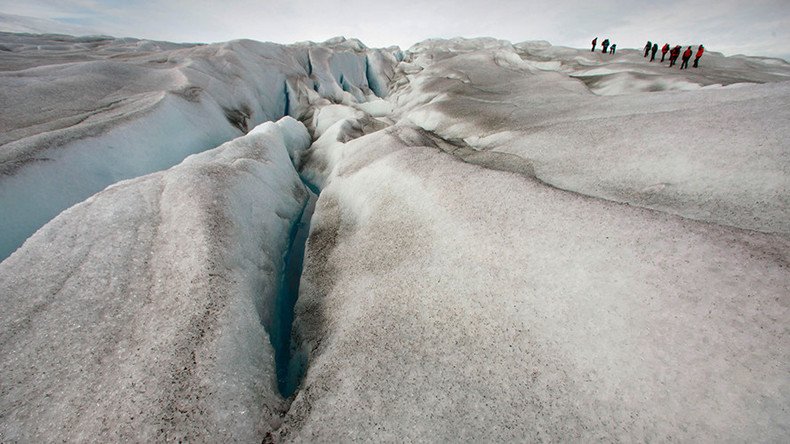Climate chaos in UK driven by melting ice-caps, warming over Greenland - study

Far-reaching weather shifts in Greenland, partially due to melting Arctic sea ice, are driving climate chaos in Britain and Europe, a new climate science study warns.
Scientists have discovered an increase in high pressure systems that interfere with weather patterns over Greenland, which is bringing chaotic and unseasonable weather conditions to Europe’s doorstep. Researchers analyzed perceived changes in weather patterns from 1951 to the present day.
The shift, which they argue began in the 1980s, is thought to be linked to melting ice caps in the Arctic.
Greenland’s ice sheet is melting earlier than ever before https://t.co/hNBeKBbmvr#climatechangepic.twitter.com/xGwvRbYAzY
— World Economic Forum (@wef) April 19, 2016
Greenland is one of the most rapidly warming regions worldwide. Its vast ice sheets, which are the only of their kind beyond Antarctica, are currently in retreat.
Researchers in the field of climatology, who do not subscribe to climate skepticism, are increasingly concerned that the resultant influx of cold water from these glaciers will hugely impact ocean currents and cause rises in the sea level worldwide.
The new study, which was published on Wednesday in the International Journal of Climatology, endorses this, saying atmospheric changes causing warming in Greenland are having definitive impacts southwards.
Soaring temperatures in Greenland causing storms and #floods in Britain, says new study https://t.co/5TvcHoWdm4#climatechange@Independent
— Hydro International (@engnaturesway) April 28, 2016
In particular, the study found that a rise in high pressure belts lurking over Greenland are dragging warm air over the state’s icy terrain. Researchers who worked on the report concluded these so-called “blocking systems” are driving climate chaos, bringing extreme weather patterns to Europe like those which occurred during the summers of 2007 and 2012.
Edward Hanna, a climate scientist at the University of Sheffield who worked on the study, says that “the unusually wet weather seen in the UK in the summers of 2007 and 2012, for instance, is linked to these stationary high pressure systems over Greenland,” he added.
Hanna, who is a Fellow of the Royal Meteorological Society and an expert in monitoring ice sheets, said the shift in weather patterns is being driven by “strong Arctic warming and changes in the atmospheric jet stream.”
Climate change and extreme weather linked to high pressure over Greenland https://t.co/MrPfRiOzAD
— Science (@scienmag) April 28, 2016
Climate scientists suggest Greenland’s expansive glacier began melting a full two months earlier than usual in 2016. Although this record premature melt is believed to be partially caused by normal weather patterns, human-driven climate change is also thought to be key.
Climate scientists have expressed grave concern over the early melt’s implications for the way in which ice will thaw in Greenland over the summer. By mid-April, roughly 12 per cent of the Island’s ice-capped surface area displayed signs of melting ice, according to climate scientist at the Danish Meteorological Institute Peter Langen.
Langen told the Mail Online this level of thawing is usually seen in late May. Prior to this, the record for an early melt of Greenland’s ice-capped terrain occurred several weeks earlier back in 1990.












